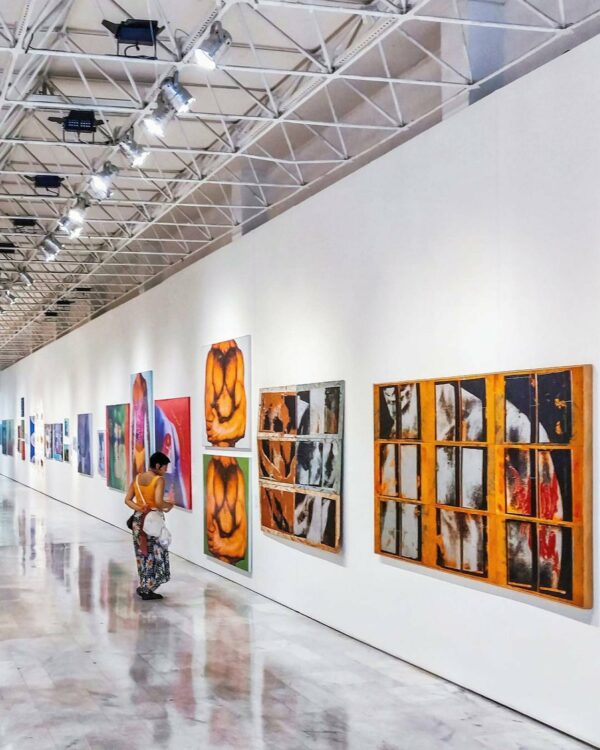Collecting art is often viewed as an exclusive practice reserved only for certain groups of people. But ZuCot Gallery in Atlanta, Georgia, challenges that very idea by making art accessible for people from all backgrounds.
ZuCot Gallery was started by Troy Taylor, Onaje Henderson, and Omari J. Henderson, who partnered together to provide a space for Black people to engage, purchase and learn about the art collecting world. The Black-owned gallery was founded in 2009 and is located near downtown Atlanta in the historic Castleberry Hill district.

The Henderson brothers were first inspired by their father, who was a painter.
“We have a responsibility to own a piece of our culture while we’re here,” Omari told 11Alive. “We have to tell these stories, and we have to own a piece of it because if we don’t, then there are other people that are going to come in and purchase this work and own it, and there will be a pain to go and see our own culture.”
But how lucrative is the art collecting game really? First, it’s important to understand how art collectors make money, which goes beyond selling pieces.
“Art collectors can make money by renting, leasing, selling, investing in art funds, appraising, or cosigning their collections to galleries or auction houses,” says Christopher William, a CPA and finance expert. “Collecting art can be a good investment, but this is not guaranteed. The success of the investment depends on a number of variables, including the quality, demand, and market for the artwork.”
And if an art collector manages to make a name for themselves, the increase in exposure and name recognition can also help garner interest for their showcases, explained Steve Rose, CEO of MoneyTransfers.com.
Is Collecting Art Profitable?
The short answer: It depends.
Susan Anderson, the founder of The Worthy Goods, describes the art market as sometimes volatile because, just like any investment, it is affected by the economy.
“The most profitable type of art varies based on current market trends, historical significance, and artist popularity,” Anderson says. “Artworks by Pablo Picasso, Vincent van Gogh, and Claude Monet are among the most valuable.”
But even if you don’t have the Mona Lisa in your collection, research is a big part of what separates a good art collector from a great one.
“It is important to do research and stay up-to-date on the value of certain pieces so that a collector doesn’t overpay for an item,” Rose says. “Investing in art has been proven to yield high returns if done properly. Additionally, tax benefits can come with owning art, as long as it is for personal use and enjoyment rather than investment or resale.”
Before investing, find out what the art is worth and strategize the best ways to monetize your collection.
“Before making a purchase, it is crucial to carry out careful market, artist, and piece analysis,” William says. “Art dealers can make a good living by purchasing and reselling works of art, but the precise amount they make can vary greatly depending on the caliber and worth of the works they deal in as well as their market knowledge.”
It could be, according to Rose, but nothing is guaranteed.
“Art collecting has been known to generate high returns if done properly, but it is not without risks,” he says.
The best way to make money with your art is by “renting out your artwork for special events, exhibiting at shows and festivals, licensing your art to manufacturers who may turn it into products they can sell, and more,” Rose says.




